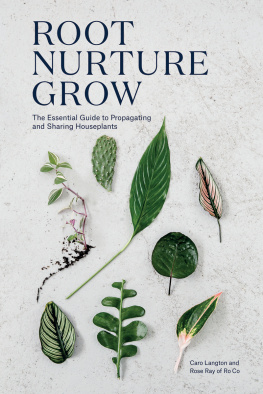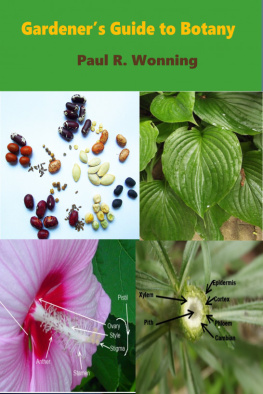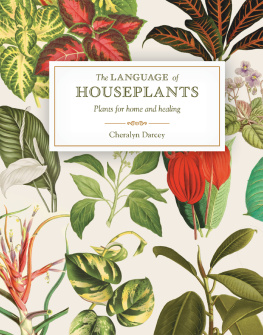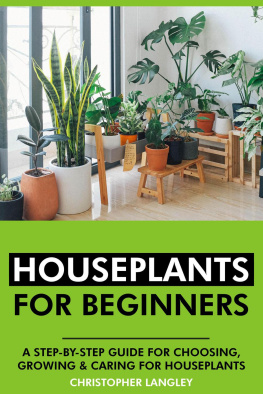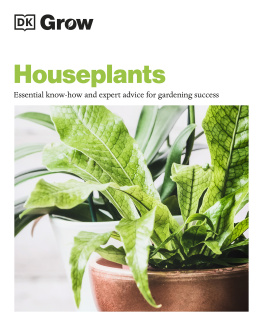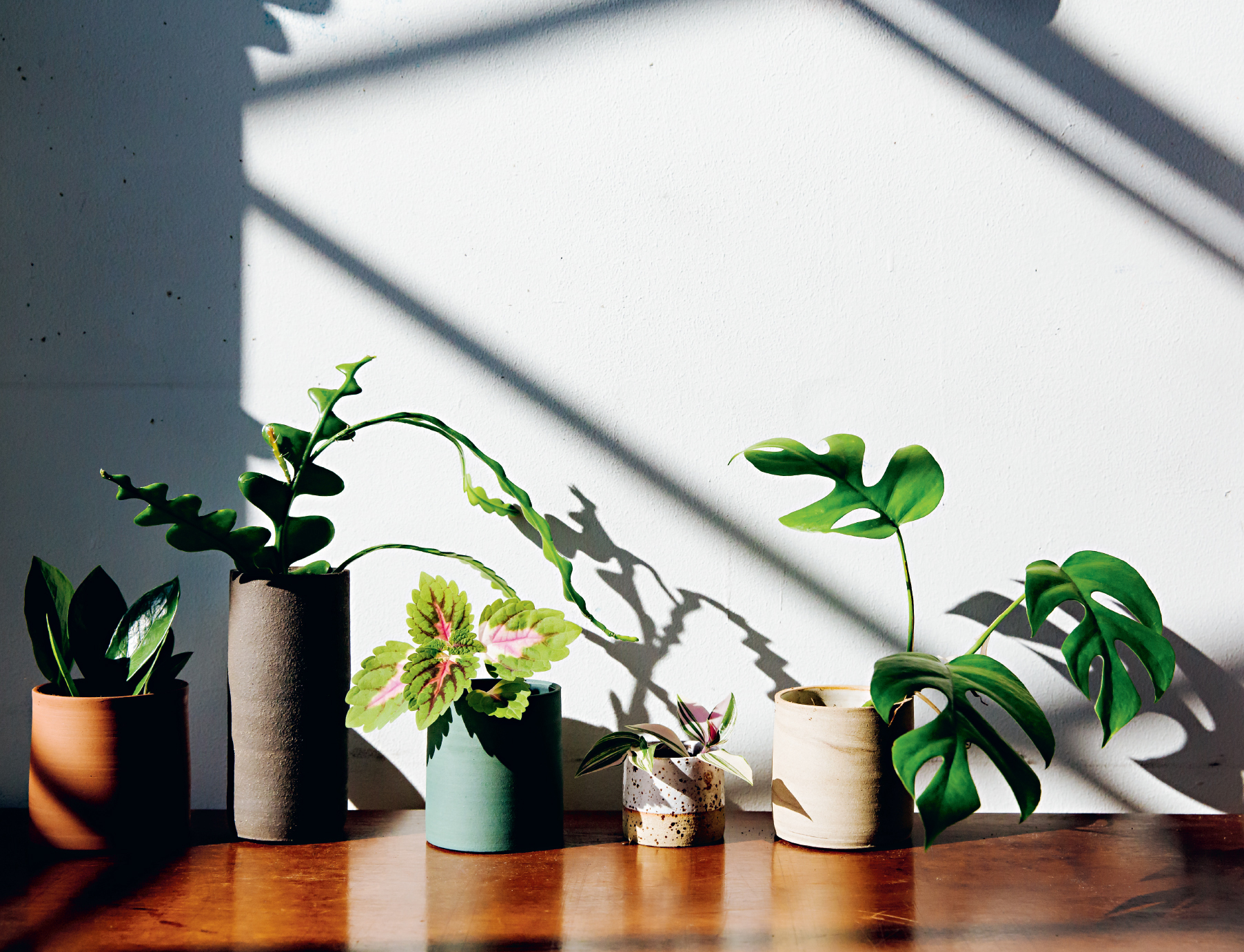


One of the strange things about living in the world is that it is only now and then one is quite sure one is going to live forever and ever and ever
Frances Hodgson Burnett, The Secret Garden
R emember that time you looked around your home and, with sudden dismay, thought, I have too many houseplants? Us neither. Because when it comes down to it, life with a potted plant is undeniably better. And better yet is the ability to grow and replicate new, healthy houseplants without ever having to visit a garden centre again. To share, swap and celebrate the miraculous methods of multiplying all of your favourites at almost no cost at all.
And heres the secret: its really, really easy.
Plants are designed to multiply. They spread their roots, send off inquisitive shoots and regenerate themselves in all sorts of exciting and unexpected ways without any help. Even for the beginner indoor gardener, a single leaf can hold enough life to be successfully grown into a brand new plant.
Perhaps youve already filled your home with potted plants and are wondering, whats next? Or youve seen a favourite tropical plant burst into bloom and suddenly outgrow the space youve styled for it in your home. Rather than simply prune it back, it is possible to use existing leaf and stem material to duplicate and produce exact clones, genetically at least. This is called asexual or vegetative propagation, and it requires no pollination or germination. In fact, just about every houseplant youve ever owned (or dreamed of owning) can be multiplied in this way.
There are certain plants that will present miniature clones of themselves as if by magic, such as the seemingly immortal spider plant. There are others that need a little more planning and encouragement, but which are just as amenable to producing new, replica plants. All you need is a few straightforward techniques, the right environment for your new plant family, and just a touch of patience.
With the help of this book, youll quickly discover how to take cuttings, cultivate runners and offshoots, divide plants at the roots and even grow brand new root systems in the air. Youll learn pruning methods that produce no waste, organic recipes, and eventually enjoy gifting and swapping newly grown greenery with friends, family and other houseplant hoarders you might meet along the way.
You will also discover DIY projects to better nurture and display your plant family, including a homemade propagation chamber and a simple self-watering planter.
Ultimately, we hope that we can help you view the plant life you come across on your everyday adventures in a new light: with the potential to become new plants and be transported to new places. Namely, your home.

Understanding Propagation
About a year ago, Rose rescued a damaged but particularly pretty succulent from a local gardening fair. The scrawled writing on its tag simply read: mother of thousands. Huddled neatly around the fringe of every leaf were row upon row of plantlets, each a tiny replica of the parent plant, many of which, on closer inspection, had happily flung themselves onto the surrounding compost. Long story short, we now own a lot of mother of thousands (Kalanchoe daigremontiana) plants.
Propagation is the way in which plants reproduce, and there are two types: sexual or asexual the latter is also sometimes called vegetative propagation.
Sexual propagation in plants involves seeds. It starts with pollination and, later, germination. It requires the meeting of two different sets of genetic information (the pollen from the male plant and the reproductive organs of the female plant) and results in a brand new, genetically unique offspring. Its a bit like human reproduction, but with more bees and squirrels involved.
For the casual indoor gardener, the specific conditions and very long wait times required can make experimenting with seeds seem a little bit daunting. What most people ideally want is to be able to propagate their plants without too great a risk of failure.
Plants are magical because they contain cells that can easily grow into other parts; for example, the stem of a plant can produce roots, while a tiny portion of leaf or root can create stems. This is what asexual propagation and this handbook is all about: easy, inexpensive and generally faster techniques for expanding your plant family.


Asexual methods of propagation are also wonderful for their spontaneity; there is nothing better than being able to bring a little piece of a plant home, whether taking a cutting from a foreign plant discovered while travelling (with the permission of the owner, of course), or being gifted a precious offshoot from a relative, friend or neighbour.
There are so many reasons to learn about propagation: more (free) plants; plants with a backstory, and therefore more personality; and, perhaps most importantly, a way to connect with the natural world. For many, the emotion bestowed upon these organic forms as they grow, thrive and flourish often goes much deeper than a superficial need for something beautiful in your home, however valid or appreciated that might be. Plants and flowers embody progress, optimism and even our urge to celebrate a simple love of life.
Whatever the plant youd like to propagate, our detailed should help you determine which method of propagation is best-suited to its needs. It lists many of the houseplants we have come to know and that weve found people love best, together with the most successful propagation methods for each plant.
Useful Terms
Aerial Root
A root that grows in the air to seek out support or nutrients
Activated Charcoal
A form of ground charcoal used to filter harmful bacteria and toxins from water
Active Growth Period
The period when a plant grows new leaves and flowers, typically between early spring and late summer
Asexual Propagation
Producing new plants using existing material from the parent plant. Also known as vegetative propagation
Coir
A fibrous, absorptive material made from the husk of coconut shells, often used as a rooting medium
Compost
Used in this book to refer to different growing mediums. These are usually composed of an organic medium (such as coir) plus sand, vermiculite or perlite, and sometimes added nutrients
Dormant Period
Between the end of summer and start of spring when plant growth is inactive
Family
A family is a group of plants which contains one or more genera
Genus / Genera
A classification of plants within a family, containing one or more different species

